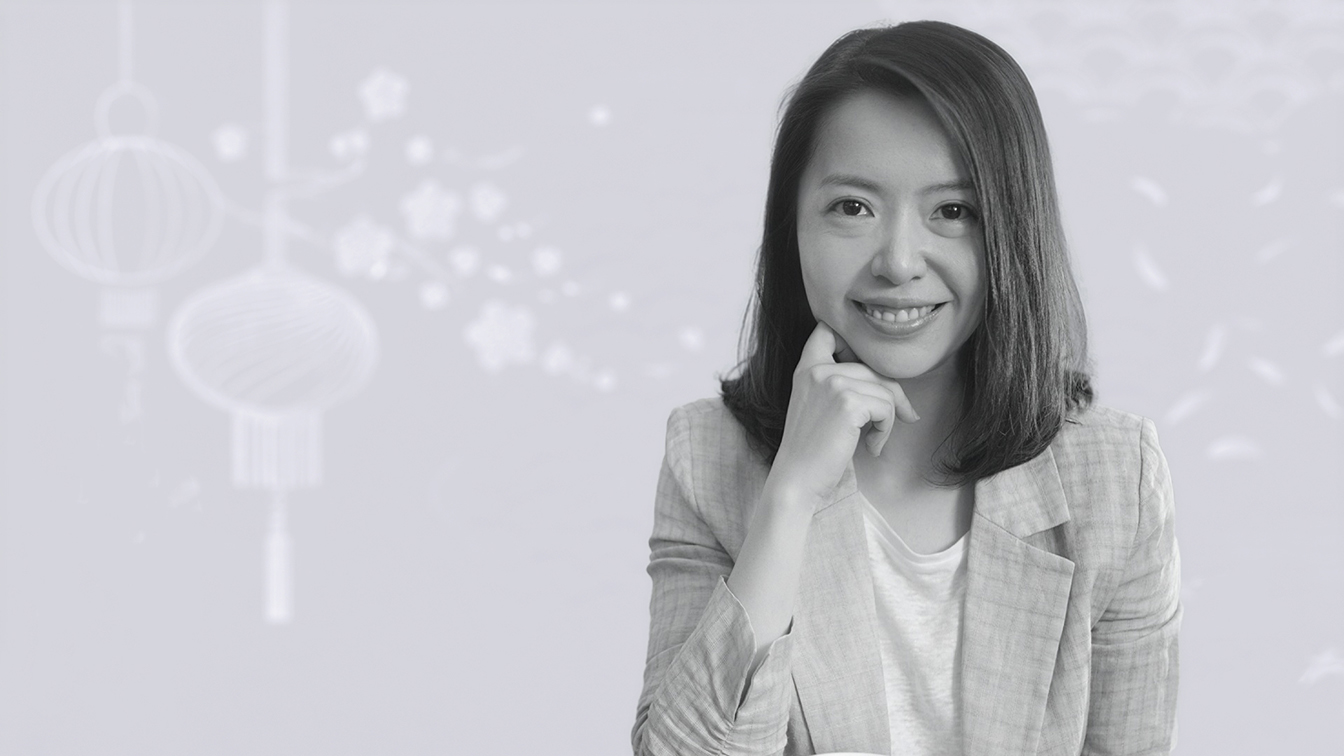The m25 Global Creative Series Episode 5: Jasmine Huang’s guide to the future of creative in China

Episode 5 of the m25 Global Creative Series features Jasmine Huang, MD & Head of Content Production at Prodigious China, a globally recognized creative leader with over 20 years of experience. m25, the global premium network, introduced these interviews to highlight international creativity and the impact of local cultures and technological advancements on creative production throughout the region. The series features interviews with key and exceptional regional creatives, illustrating how individual endeavors, when combined with cultural understanding and team building, shape successful advertising campaigns and real purpose.
Jasmine Huang’s career is rooted in a deep passion for storytelling and the belief that “content can transcend time and mediums.” What inspires her most is the power of authentic narratives to build connections between brands and audiences such as the Johnnie Walker “Yu Lu” Project she co-produced with famous film director Jia Zhangke in 2010, which pioneered the “micro-film” content marketing format and remains an industry benchmark to this day.
Huang became MD of Prodigious China and Head of Content Production at Publicis China in early 2020, navigating the pandemic to build a production team and ensure business stability. Under her leadership, Prodigious saw three years of double-digit revenue growth and won numerous “Production Agency of the Year” and “Specialist Agency of the Year” awards. These achievements led to her inclusion on Campaign China’s 2024 “Women to Watch in Greater China” list and nominations for “Women Leading Change in the Asia-Pacific Region” in 2024 and 2025. Huang also judged the HiShorts! Xiamen Short Film Festival in 2023 and 2024, and this year is pioneering the AIGC short film track, a new milestone after the “Yu Lu” initiative. Her work is driven by fearless creativity
What has been the most memorable campaign you’ve led, and why does it stand out to you?
I’ll never forget leading Prodigious on the “Fresh New Year Tea House” project. We built a Chengdu-style teahouse in a Shanghai studio, seamlessly blending on-set filming with an immersive offline event. That experience reinforced my belief that exceptional production isn’t just flawless execution it elevates creative value by weaving ideas across every medium.
How have you seen China’s advertising landscape evolve over the past decade, and what global lessons can be drawn from that transformation?
Over the past decade, I’ve watched China’s ad market transform from traditional print and broadcast into a dynamic, multi-platform ecosystem driven by social commerce and digital innovation. Today’s consumers, especially Gen Z, demand authenticity and interaction, so we’ve had to pivot from one-way messaging to agile, audience-centric campaigns. I’ve seen luxury brands like Lancôme thrive by integrating live-stream shopping and product demos into their narratives, proving that even in bite-sized formats, we can forge deep emotional connections.
Local culture still runs at the heart of every great campaign. Collective harmony, family ties, and Lunar New Year traditions surface in our work from Fresh’s Spring Festival films to bespoke activations for Porsche and Louis Vuitton. I’ve learned that global brands win here by balancing relevance, consistency, and interactivity: fitting into local contexts without losing brand DNA, building long-term stories amid fragmentation, and giving audiences something to respond to not just watch.
How is AI and emerging technology reshaping creative production, and how have you integrated it into your work at Prodigious?
AI is far more than a backstage tool; it’s rewriting the playbook for marketing logic. At Prodigious, I’ve championed regular AI workshops and hands-on training so our team can master everything from data-driven content decisions to generative storytelling. Externally, I run client sessions that turn AI from a buzzword into real solutions whether that’s predictive audience insights or on-demand asset generation.
I’m convinced AI’s true power lies in brand building, not just cost cutting. By mining data to uncover emotional triggers and using generative models to craft resonant narratives, we create work that endures. For Sensodyne’s Winter Olympics campaign, we paired eye-tracking with AI to boost click-through rates by over 30%. For the Shanghai CIIE countdown videos, AIGC refined every sci-fi animation detail. And with our CaST (Creative at Scale Team) model, we’ve collapsed brief → creativity → production into a parallel, data-driven workflow, uniting clients, agencies, and studios in real time.
What advice do you have for young creatives starting out in China’s ad industry today?
To those starting out in China’s ad industry, I always stress three qualities: curiosity, adaptability, and empathy. Stay hungry for tech breakthroughs, AI will soon feel as fundamental as the internet itself. Immerse yourself in local culture and consumer nuances. And never forget the power of a well-told story. Key skills? Data literacy to decode insights, flexibility to ride platform shifts, and a genuine flair for connecting with diverse audiences.
I still carry a mentor’s lesson: purposeful creativity solves real problems. That’s why I make time to mentor newcomers, share both wins and stumbles, and let them lead small projects. It builds confidence and in our fast-paced world, passion and resilience are non-negotiable.
What strategies do you recommend for brands and agencies looking to succeed in China now and in the next 5–10 years?
Expanding in China means tackling fierce competition, fragmented media ecosystems, and the challenge of marrying global standards with local tastes. My playbook includes investing in dedicated live-stream teams, building agile workflows for policy or algorithm changes, and forging deep partnerships like our co-developed CaST team with Haleon, which earned trust through consistent delivery.
For international brands eyeing China, I advise prioritising true localisation over simple translation: understand regional nuances, collaborate with key opinion consumers, and embed into social commerce ecosystems. Rigid global templates fall flat here; only flexible strategies that adapt to real-time feedback succeed.
Looking ahead, the next 5–10 years will revolve around deeper AI integration, immersive experiences, and purpose-driven marketing. Agencies must cultivate tech-savvy talent, build cross-functional teams that marry creativity with data science, and never lose sight of human insight because even as algorithms evolve, emotional resonance remains the ultimate boundary to cross.
As I often say, we are “those who polish stars,” calibrating the brilliance of great ideas so they shine brighter and longer.
EPISODE 3 WITH RATNA ‘SASA’ PUSPITASARI
m25 全球创意系列第 5 集采访了 Jasmine Huang——Prodigious 中国的董事总经理兼内容制作主管,这位全球公认的创意领袖拥有超过 20 年的经验。m25 作为全球高端网络推出这一系列访谈,旨在突出国际创意,以及本地文化与技术进步对整个地区创意制作的影响。本系列采访了重要且卓越的区域创意人士,展示了个人努力如何与文化理解和团队建设相结合,共同塑造成功的广告活动与真正的品牌意义。
Jasmine Huang 的职业生涯根植于她对讲故事的深厚热情,以及她相信“内容可以超越时间与媒介”。最令她受到启发的是,真实的叙事能够在品牌与受众之间建立联系——例如她与著名导演贾樟柯在 2010 年联合制作的尊尼获加“遇路”项目,该项目开创了“微电影”内容营销形式,并至今仍是行业标杆。
Huang 于 2020 年初担任 Prodigious 中国董事总经理及阳狮中国内容制作主管,在疫情期间带领团队建设制作部门并确保业务稳定。在她的领导下,Prodigious 实现了连续三年的两位数营收增长,并多次获得“年度最佳制作代理商”和“年度最佳专业代理商”奖项。这些成就使她入选 Campaign China 2024 年“大中华区值得关注的女性”榜单,并于 2024 和 2025 年连续两年获提名“亚太地区引领变革女性”。Huang 还曾于 2023 和 2024 年担任厦门海峡短片节评委,今年她正开创 AIGC 短片赛道,这是继“遇路”项目之后的又一里程碑。她的工作始终由无畏的创意驱动。
你主导过的最难忘的活动是什么?为什么它如此特别?
我永远不会忘记带领 Prodigious 完成的“Fresh 新年茶馆”项目。我们在上海的摄影棚里搭建了一座成都风格的茶馆,将片场拍摄与沉浸式线下活动无缝融合。那次经历让我更加坚信,卓越的制作不仅是完美执行,而是通过跨媒介的创意整合来提升创意价值。
过去十年,你如何看待中国广告行业的变化?从中有哪些全球经验值得借鉴?
过去十年,我见证了中国广告市场从传统平面和广播转型为一个由社交电商与数字创新驱动的多平台生态系统。如今的消费者,尤其是 Z 世代,更加追求真实与互动,因此我们必须从单向信息转向以受众为中心的灵活营销。我看到像兰蔻这样的奢侈品牌,通过将直播带货与产品演示融入叙事而取得成功,这证明即使在碎片化的内容中,我们依然能够与受众建立深层情感联系。
本地文化仍然是每一个伟大营销活动的核心。集体和谐、家庭纽带和春节传统经常出现在我们的作品中,从 Fresh 的春节短片到保时捷与路易威登的定制活动。我学到,全球品牌要在这里取胜,需要在相关性、一致性与互动性之间找到平衡:既要融入本土语境,又不能失去品牌 DNA;既要在碎片化环境中构建长期故事,也要给受众可以回应、可以参与的体验,而不仅仅是观看。
人工智能和新兴技术如何重塑创意制作?你们在 Prodigious 是如何整合它们的?
AI 不仅仅是后台工具,它正在重写营销逻辑。在 Prodigious,我推动定期举办 AI 研讨会和实操培训,让我们的团队掌握从数据驱动内容决策到生成式叙事的各个环节。在外部,我也会为客户举办工作坊,让 AI 不再是一个流行词,而是切实可行的解决方案——无论是预测受众洞察,还是按需生成素材。
我相信 AI 的真正力量不只是降低成本,而是塑造品牌。通过挖掘数据中的情感触发点,并利用生成模型打造引人共鸣的故事,我们能够创作出经得起时间考验的作品。比如在 Sensodyne 冬奥会活动中,我们将眼动追踪与 AI 结合,使点击率提升了 30% 以上;在上海进博会倒计时短片中,AIGC 精修了每一个科幻动画细节;而通过我们的 CaST(Creative at Scale Team)模式,我们将简报 → 创意 → 制作的流程并行化、数据化,实现客户、代理商与制作团队的实时协作。
对于刚进入中国广告行业的年轻人,你有哪些建议?
对于刚入行的年轻人,我总是强调三种品质:好奇心、适应力与同理心。对技术突破保持渴望,人工智能很快会像互联网一样成为基础设施;深入了解本地文化与消费者细节;永远不要忘记一个好故事的力量。关键技能包括:具备数据素养以解读洞察,拥有灵活性以应对平台变化,并且能够与多元受众建立真诚的情感联系。
我始终铭记一位导师的教诲:有目的的创意是为了解决真实问题。这也是为什么我会抽时间指导新人,与他们分享成功与失误,并让他们主导一些小项目。这不仅能建立自信,而且在我们这个快节奏的行业里,热情与韧性是不可或缺的。
你建议品牌和代理机构在中国现在及未来 5–10 年如何取得成功?
在中国扩张意味着要面对激烈的竞争、碎片化的媒体生态,以及如何将全球标准与本土口味融合的挑战。我的方法包括:投资专门的直播团队、建立可应对政策或算法变化的灵活工作流程,以及打造深度合作关系,例如我们与 Haleon 共同开发的 CaST 团队,正是通过持续的交付赢得了信任。
对于想要进入中国的国际品牌,我建议优先考虑真正的本土化,而不是简单翻译:理解区域差异、与关键意见消费者合作,并嵌入社交电商生态。僵化的全球模板在这里行不通,唯有能够实时调整的灵活策略才能成功。
展望未来 5–10 年,行业将围绕更深层次的 AI 融合、沉浸式体验以及以目标为导向的营销展开。代理机构必须培养具备技术敏感度的人才,组建结合创意与数据科学的跨职能团队,同时始终不忘人性的洞察——因为即使算法不断进化,情感共鸣依然是我们要跨越的最终边界。
正如我常说的,我们是“打磨星星的人”,让伟大创意的光芒更加璀璨而长久。
Read previous episodes of the m25 Global Creative Series below:
Episode 11: Maan Bautista, Executive Creative Director at VML Manila
Episode 10: Pradeep D’Souza, Founder/Creative Partner at Nine:TwentyEight, Singapore
Episode 9: Jonathan Cruz, Creative Director at FP7McCann Dubai
Episode 8: Asheen Naidu, Group Executive Creative Director at Leo Singapore
Episode 7: Yubin Bang, Creative Director at Cheil Seoul
Episode 6: Jerry C. Hizon, Chief Creative Officer at Dentsu Creative Philippines and Dentsu Creative Manila
Episode 4: Federico Fanti, Regional Chief Creative Officer at FP7McCann MENAT
Episode 3: Ratna ‘Sasa’ Puspitasari, CEO at Fortuna Indonesia
Episode 2: Livio Grossi, Group ECD at Dentsu Redder Vietnam
Episode 1: Merlee Jayme, Creative Chairmom and Founder of The Misfits Camp and Jayme Headquarters
